I was supposed to have a happy rest at home recently, but unexpectedly entered a round of high-intensity work early. I discussed many topics with my friends, such as 4680, high nickel, 400V and 800V fast charging, battery swapping, power semiconductors and intelligent automotive development.
Every day, I collided with many people’s thinking, which is very helpful for me to grasp the investment logic for the short and long-term overall in the automotive field in the future.
In writing about GWM’s new energy, there are many interesting aspects to be found. From the perspective of short- and medium-term changes, GWM’s approach in the field of new energy is very practical. Let’s take a look together.
From Euler to Salon
GWM’s foray into new energy vehicles mainly started with 2B Iq and Black Cat A00-level small cars. In October, the insured data for these cars was 10,473 units, and from the perspective of the annual distribution, the vehicle model structure has undergone significant changes compared to before.
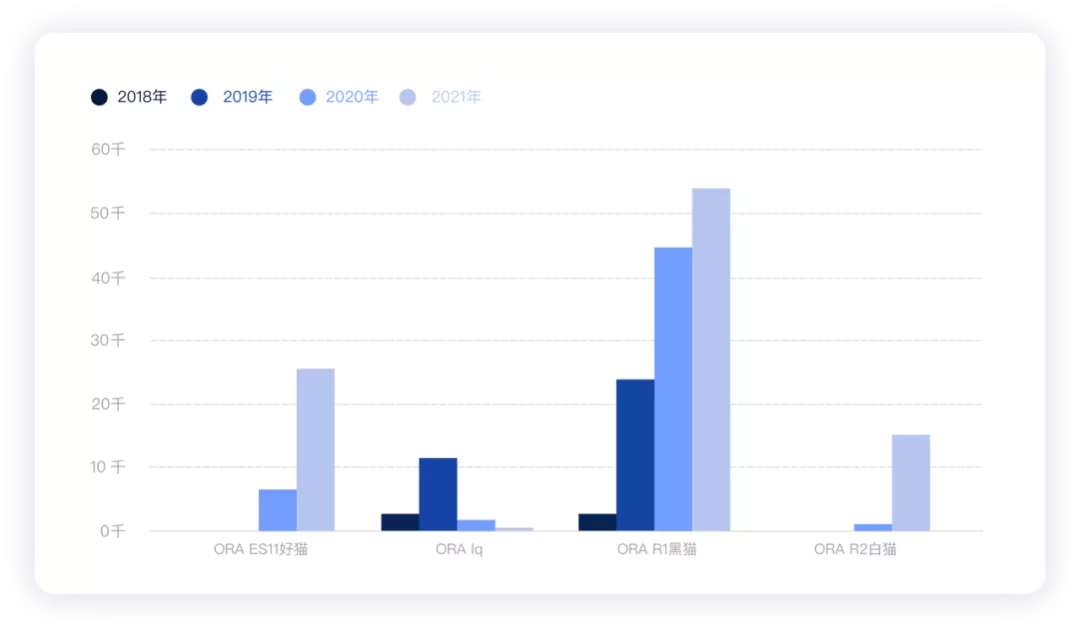
As can be seen from the following figure, the sales volume of GWM’s new energy vehicles was obviously greatly affected by the chip shortage. The worst time was in May, when the cars were pre-sold but they could not be delivered. With the change of chip procurement strategy, GWM’s current new energy vehicle model structure has also changed. Priority is given to the higher-priced Good Cat, accounting for almost half of the total.
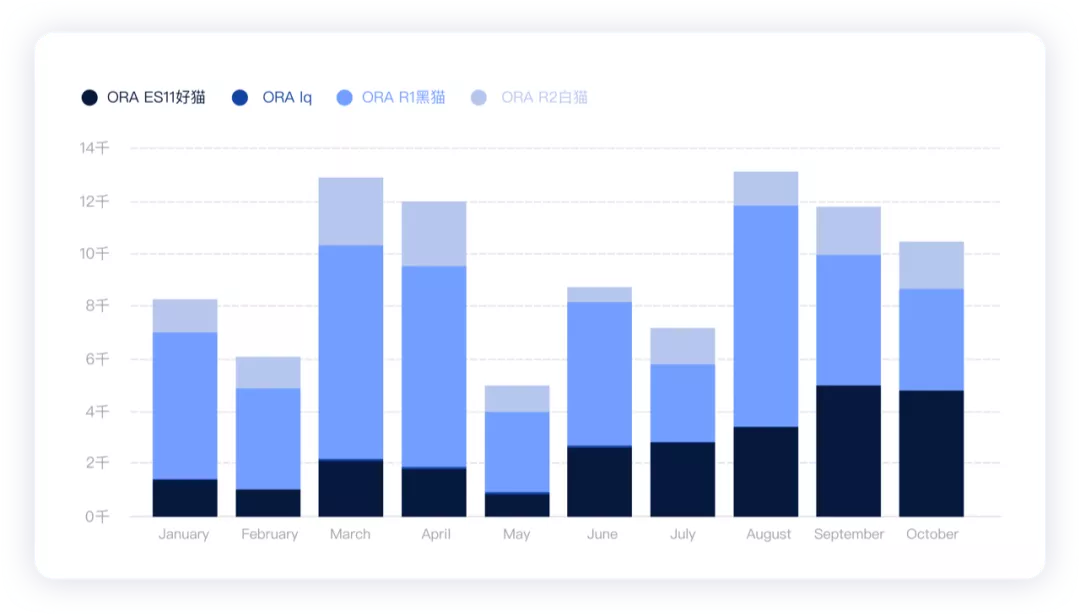
The following chart makes it clearer, from low-cost Black Cat and White Cat to the relatively delicate mini Good Cat style, GWM’s focus on the female group’s strategy has achieved very great success.

At this year’s Guangzhou Auto Show, GWM also created a high-end brand Salon outside of Euler, focusing on pure electricity and including fuel cells in the plan for the future.
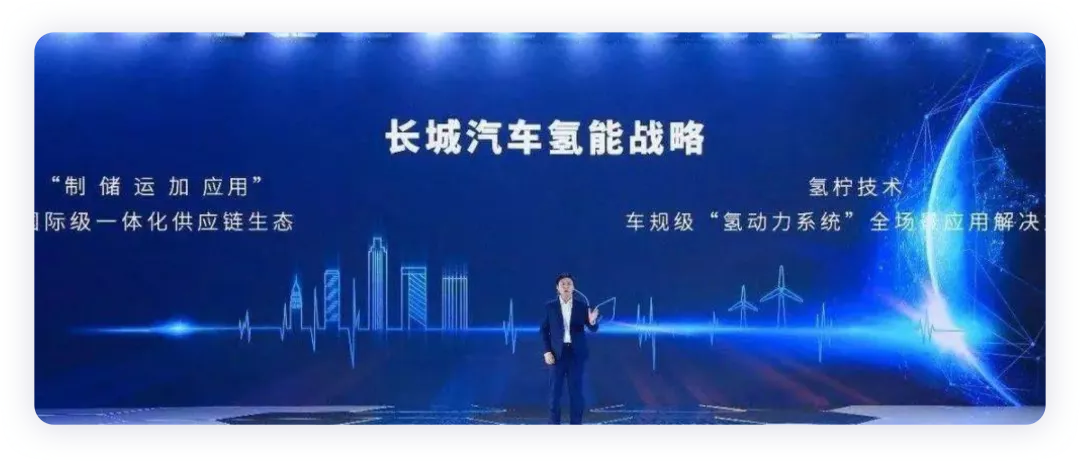 A pure electric sedan was released at the Guangzhou Auto Show, featuring four Lidars for intelligent functions, and being the first vehicle to adopt Huawei’s MDC intelligent driving computing platform. This model is actually separated from the Euler series, positioning itself as a mid-to-large-sized pure electric luxury sedan, priced in the range of 400,000 yuan.
A pure electric sedan was released at the Guangzhou Auto Show, featuring four Lidars for intelligent functions, and being the first vehicle to adopt Huawei’s MDC intelligent driving computing platform. This model is actually separated from the Euler series, positioning itself as a mid-to-large-sized pure electric luxury sedan, priced in the range of 400,000 yuan.
Note: Based on the battery gradient, the first model has a 115kWh battery with a higher price, then the price is decreased through gradient configuration. This is the overall strategy.
The Great Wall’s Dayu Battery
At the 8th Great Wall Technology Festival, Great Wall announced their battery’s name as “Dayu Battery”, and I’d like to briefly summarize this technology.
This battery technology is planned to be fully utilized in 2022, with the Dayu Battery achieving full coverage of battery cell chemistry system (NCM811, Middle Nickel 55, and Lithium Iron). I have summarized some of the contents below.
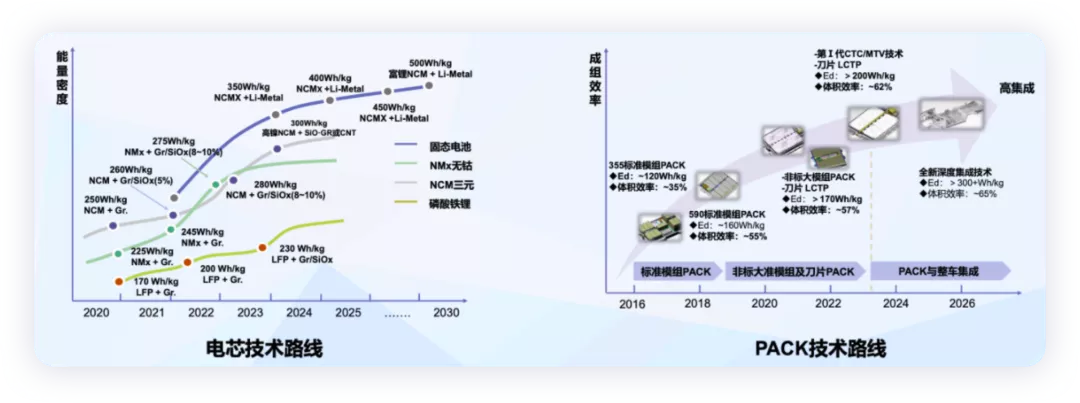
From the Great Wall Technology Roadmap, the biggest differentiation is mainly the cobalt-free technology route taken by Hexcell, while still following the Lithium Iron route. The Pack technology route for the 2022 Salon model is based on the 590 standard Pack, and has already introduced non-standard large module Pack and blade LCTP (Hexcell’s short-blade technology) into its development. CTC technology will be introduced around 2023.
This battery system actually adheres to the MEB590 design plan, and some adjustments were made to the similar specifications. That is to say, the design is for 115kWh, which is achieved using 15 modules (each 7.6kwh) to meet the overall energy demand. Great Wall did not follow Geely SEA platform’s approach of focusing on CTP with the efforts of C family, but instead maintained the module system design and a compatible solution for both C and Hexcell Energy platforms, which I think is quite remarkable.
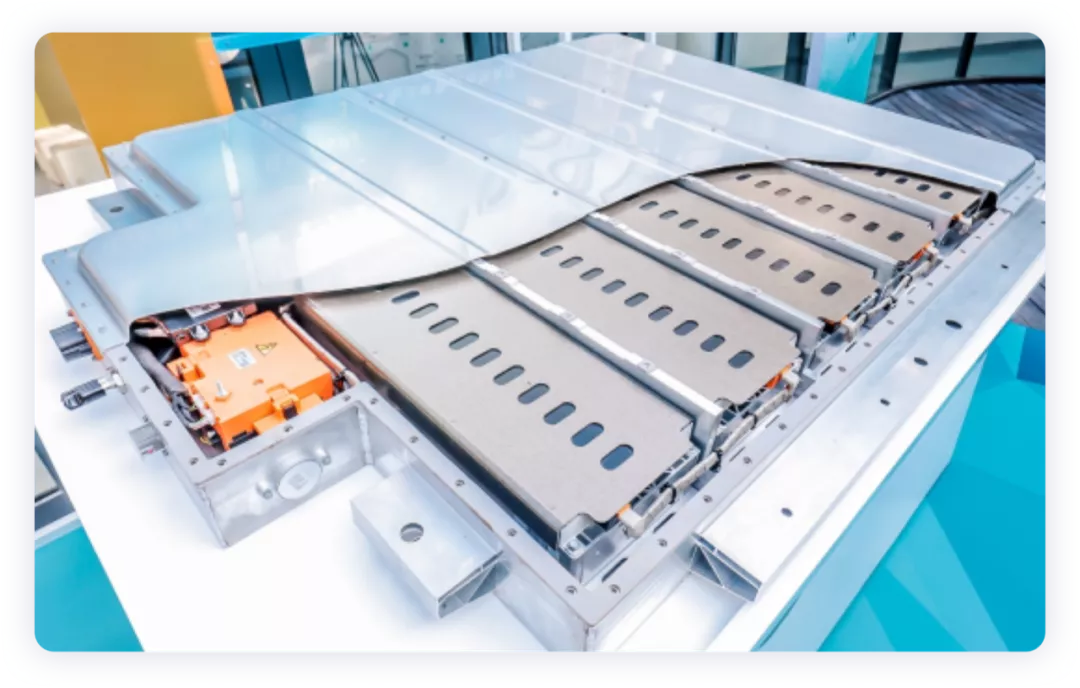
(Two different length schemes for 10 modules and 15 modules)
From a detailed design perspective, Great Wall’s PPT is well written and clear, so I think it’s good enough to just put it here.There are many things to consider in the shell design: (I personally think that no matter how hard we try, it is difficult to cover the entire temperature range)
1) Heat isolation: all battery cells are separated by double-layer composite materials (not aerogels), which are compatible with the space requirements of different chemical systems for cell expansion. Each module is made of high-temperature insulated composite materials, and the protective cover is designed with directional explosion outlets to discharge high-temperature gas and flame streams.
2) Bi-directional flow: multiple types of flow channels are designed to control the flow of heat sources along a predetermined trajectory and reduce the thermal impact on adjacent modules.
3) Heat flow distribution: Even distribution of gas and flame streams in different structural channels; longitudinal channels and bottom flow channels are connected to avoid sharp thermal impact on adjacent cells and modules, causing a second thermal runaway.
4) Directional explosion: The fire source is quickly guided to the fire extinguishing channel and safely discharged through diversion, guidance, and flow changing.
5) Automatic fire extinguishing: Directional explosion outlets are equipped with multi-layer asymmetrical honeycomb structures to quickly suppress and cool flames.
6) Positive pressure and oxygen inhibition: According to the honeycomb aperture and unit gas mass flow rate, the pressure inside the battery package is always kept higher than outside to avoid secondary combustion caused by oxygen entering.
7) High-temperature insulation: High-voltage components inside the battery pack are insulated and protected, and high-temperature insulation protection design is implemented for high-voltage connections and high-voltage safety areas inside the battery pack.
In summary, in the past few days, I have been writing in the morning, and there may be omissions. This information is for reference only.
This article is a translation by ChatGPT of a Chinese report from 42HOW. If you have any questions about it, please email bd@42how.com.